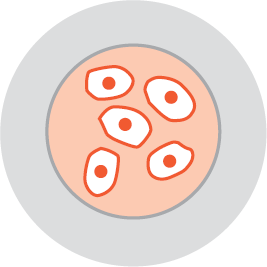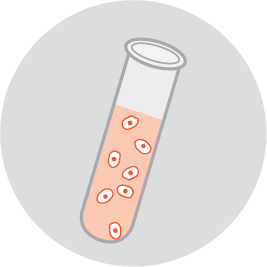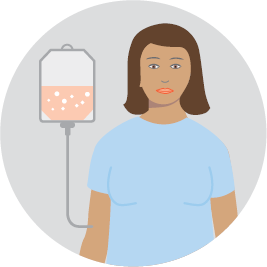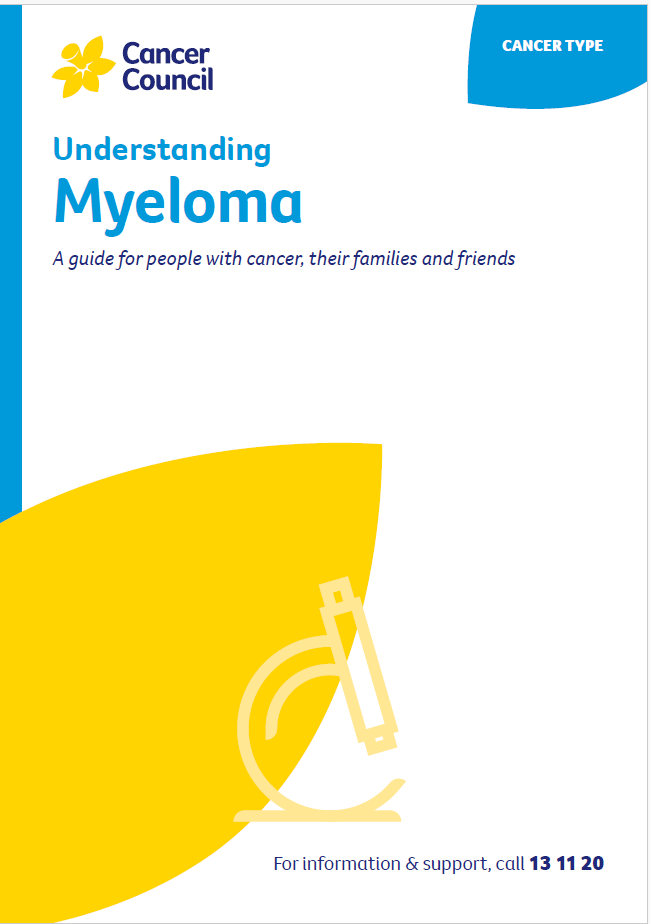- Home
- Myeloma
- Treatment
- Stem cell transplant
- Steps in an autologous stem cell transplant
Steps in an autologous stem cell transplant
This is a general outline of a transplant using your own stem cells, but the process varies. Talk to your transplant team about what to expect. More detailed information about stem cell transplants is available from Myeloma Australia.
 | 1. Stem cells stimulatedThe first step is to help the body make more stem cells. You’ll usually have a dose of chemotherapy followed by injections of a growth factor drug called granulocytecolony stimulating factor (G-CSF) for 5–10 days. You can often have these injections at home.G-CSF helps the stem cells multiply and move out of the bone marrow into the blood. This process is called mobilisation and it takes several days. Blood tests will show whether your blood has made enough stem cells for collection. |
 | 2. Stem cells collectedStem cells are collected from your blood via a process called apheresis. You will have a needle called a cannula inserted into a vein in each arm, or you may need a special tube called a central line surgically inserted into your chest or neck.During apheresis, blood is taken from your body, passed through a machine to remove the stem cells, and then returned to your body. This takes 3–4 hours and is usually done during a day visit to the hospital. |
 | 3. Stem cells preservedThe stem cells are frozen using liquid nitrogen. This is known as cryopreservation.You will have a rest period at home for about a month before the next step. |
 | 4. High-dose chemotherapyIn the week before the transplant, you’ll go to hospital for high-dose chemotherapy to kill any remaining lymphoma cells. This will also destroy the stem cells in the bone marrow, making room for new stem cells to grow.Side effects will be similar to those of standard chemotherapy but can be more intense. They may include nausea, diarrhoea, mouth sores, flu-like symptoms and high risk of infections. |
 | 5. Stem cells transplantedA day or so after you have high-dose chemotherapy, your frozen stem cells are thawed and put back into your body (reinfused) using an intravenous drip. This process is similar to a blood transfusion and takes about an hour.You may have stomach cramps and feel sick (nauseous), which can be managed with medicines. |
 | 6. EngraftmentOver the next couple of weeks, the new stem cells will develop into new blood cells, allowing your bone marrow to recover. This is called engraftment.While the stem cells engraft, you’re at risk of infection. In most cases, you will stay in hospital for 1–3 weeks until your blood counts have returned to safe levels and you’re well enough to go home. Once home, you’ll need check-ups every week or so. Over time, you’ll need check-ups less often. |
→ READ MORE: Supportive treatment for myeloma
Podcast: Making Treatment Decisions
Listen to more episodes from our podcast for people affected by cancer
More resources
Dr Ian Bilmon, Haematologist, Westmead Hospital and The Sydney Adventist Hospital (Clinical review); Martin Boling, Consumer; Catherine Bowley, Specialist Myeloma Nurse, Myeloma Australia; Dr Samuel Dickson, Radiation Oncologist, Calvary Mater Newcastle; Rachelle Frith, Clinical Nurse Consultant, Haematology, Prince of Wales Hospital; Dr Wojt Janowski, Haematologist, Calvary Mater Newcastle; Yvonne King, 13 11 20 Consultant, Cancer Council NSW. We would like to thank all the health professionals, consumers and editorial teams who have worked on current and past editions of this title.
View the Cancer Council NSW editorial policy.
View all publications or call 13 11 20 for free printed copies.

